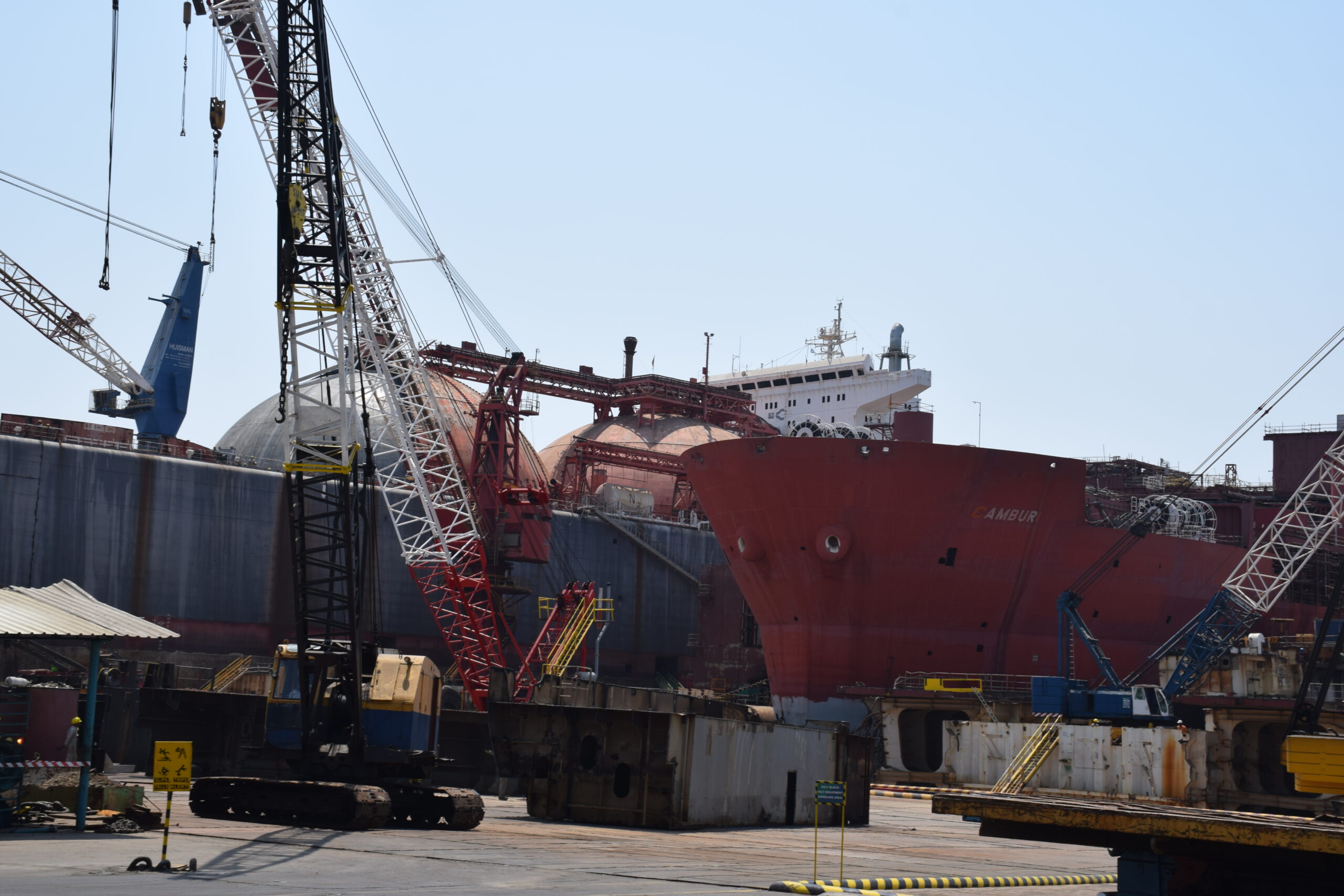Yemen’s Houthis Strike Oil Tankers in Red Sea: A Bold Assertion of Power Amid Ongoing Tensions

*September 4, 2024* — The Red Sea, a vital artery of global maritime trade, became the latest stage for escalating tensions in the Middle East as Yemen’s Houthi rebels claimed responsibility for an attack on the Panama-flagged oil tanker Blue Lagoon I. The incident, which occurred late Monday, saw multiple missiles and drones strike the vessel, marking a significant escalation in the ongoing conflict between the Houthis and Saudi Arabia. However, the Houthis notably omitted any mention of the Saudi-flagged tanker Amjad, which was also attacked in the same incident.
The Incident: A Calculated Strike
The attack took place approximately 70 nautical miles northwest of the Yemeni port of Saleef, a region increasingly fraught with danger as the Houthis have expanded their operational reach in the Red Sea. The two tankers, the Blue Lagoon I and the Amjad were sailing nearby when they were struck by what sources described as a coordinated assault involving both missile and drone strikes.
According to the Joint Maritime Information Center (JMIC), a coalition-run entity tasked with monitoring Houthi activities in the region, the Blue Lagoon I was hit by three ballistic missiles. Despite the severity of the attack, the vessel sustained only minimal damage, allowing it to continue its journey without requiring immediate assistance. All crew members aboard the tanker were reported safe.
The Amjad, a supertanker capable of carrying up to 2 million barrels of crude oil, was also hit but reportedly suffered no significant damage. The exact details of the damage to Amjad remain unclear, but one source familiar with the situation suggested that the Saudi vessel might not have been the primary target of the attack. This has led to speculation that the Houthis may have been exercising a form of tactical restraint or that the attack on the Amjad was incidental, a byproduct of the proximity between the two tankers at the time.
Strategic Implications: The Houthis’ Expanding Reach
The Houthis’ decision to strike the Blue Lagoon I, and possibly the Amjad, underscores their growing capabilities and willingness to engage in high-risk operations that directly threaten global energy supplies. This attack is part of a broader pattern of increasingly audacious strikes in the Red Sea, a critical chokepoint for global oil shipments.
Since November 2023, the Houthis have conducted over 70 attacks in the region, sinking two vessels, seizing another, and killing at least three seafarers. These operations have not only targeted military assets but have also disrupted civilian maritime traffic, challenging the security of one of the world’s most important maritime corridors.
The Houthis have framed their recent attacks as acts of solidarity with Palestinians in the Gaza conflict, which has inflamed tensions across the Middle East. By targeting vessels associated with nations they perceive as hostile, the Houthis aim to send a clear message that their influence extends beyond Yemen’s borders and into international waters.
The JMIC’s assessment that the Blue Lagoon I was targeted due to its association with entities that had made recent port calls in Israel further complicates the narrative. This suggests that the Houthis are not only responding to the broader regional conflict but are also selectively targeting vessels based on their perceived affiliations, adding a new layer of risk for international shipping in the Red Sea.
The Response: A Delicate Balance of Power
In Riyadh, the attack has raised alarms about the growing threat posed by the Houthis, who are backed by Iran, Saudi Arabia’s regional rival. The Saudi government, which has been embroiled in a costly and protracted war in Yemen since 2015, is acutely aware of the strategic implications of these attacks. The Red Sea is a crucial maritime route for Saudi oil exports, and any disruption could have significant economic and geopolitical consequences.
Despite the attack, the Saudi government has been relatively muted in its public response. This restraint may be indicative of the kingdom’s broader strategy to de-escalate tensions with Iran and its proxies in the region, particularly as Saudi Arabia seeks to extricate itself from the quagmire of the Yemeni conflict. However, this approach also leaves Saudi shipping vulnerable to future Houthi attacks, raising questions about the effectiveness of current security measures.
The Saudi national shipping group Bahri, which owns the Amjad, has yet to issue an official statement regarding the incident. This silence may reflect the complexity of the situation, as Saudi Arabia navigates a delicate balance between demonstrating strength in the face of aggression and avoiding actions that could further inflame the situation.
Global Reactions: A Ripple Effect Across the Industry
The attack on the Blue Lagoon I and Amjad has sent ripples across the global shipping industry. Tanker operators and maritime insurance companies are increasingly concerned about the risks posed by the Houthis, whose attacks threaten to disrupt one of the world’s busiest shipping lanes.
The Greek manager of the Blue Lagoon I, Sea Trade Marine SA, has not yet commented on the incident, but industry experts suggest that the attack could lead to a reassessment of the risks associated with operating in the Red Sea. Shipping companies may need to implement additional security measures, such as rerouting vessels or increasing onboard security personnel, to mitigate the threat of future attacks.
Insurance premiums for vessels operating in the region are also likely to rise, reflecting the increased risk. This could have broader implications for the global oil market, as higher shipping costs may be passed on to consumers, potentially driving up the price of crude oil.
The international community has expressed concern about the growing threat to maritime security in the Red Sea. The United States, which has a significant naval presence in the region, has condemned the attack and reiterated its commitment to ensuring the safety of international shipping lanes. However, there are limits to what external powers can do to prevent such attacks, particularly as the Houthis continue to evolve their tactics and capabilities.
Historical Context: The Red Sea as a Theater of Conflict
The Red Sea has long been a theatre of geopolitical conflict, serving as a strategic chokepoint for global trade and a flashpoint for regional rivalries. The current conflict in Yemen, which began in 2015, has exacerbated these tensions, drawing in regional and international powers with competing interests.
The Houthis, a Shia Muslim group with ties to Iran, have leveraged the chaos of the Yemeni civil war to expand their influence and assert their power in the region. Their control over large swathes of northern Yemen, including the capital Sanaa, has given them the resources and strategic position to threaten the Red Sea.
Saudi Arabia, on the other hand, has been deeply involved in the conflict, leading a coalition of Arab states in a military campaign to restore the internationally recognized government of Yemen. The war has been devastating for Yemen, causing a humanitarian crisis of immense proportions, but it has also drained Saudi resources and strained its relations with key allies.
The Houthis’ use of missile and drone technology to target ships in the Red Sea represents a significant escalation in their capabilities. These attacks are not just a threat to Saudi Arabia but to the broader international community, as they undermine the security of a vital global trade route.
Looking Ahead: Navigating a Dangerous Waters
As the situation in the Red Sea continues to evolve, shipping companies, governments, and international organizations will need to adapt to the new reality of heightened security risks. The Houthis have demonstrated their willingness and ability to target vessels far beyond Yemen’s shores, and there is little indication that these attacks will cease shortly.
For Saudi Arabia, the challenge will be to protect its maritime interests without further escalating the conflict with the Houthis. This may require a combination of diplomatic efforts to reduce tensions and enhanced security measures to deter future attacks.
The broader international community also has a role to play in ensuring the safety of maritime traffic in the Red Sea. This could involve increased naval patrols, intelligence sharing, and support for regional initiatives aimed at addressing the underlying causes of the conflict in Yemen.
In the meantime, the attack on the Blue Lagoon I and Amjad serves as a stark reminder of the volatility of the Red Sea and the broader Middle East. As the Houthis continue to assert their power, the world will be watching closely to see how this conflict unfolds and what it means for the future of global maritime security.
Author: shipping inbox
shipping and maritime related web portal








